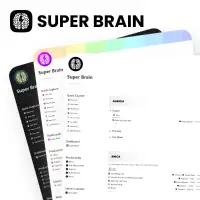Getting Started with Mindfulness and Meditation
Getting Started with Mindfulness and Meditation: Cultivating Inner Peace and Clarity
In the bustling heart of our modern world, where the constant buzz of notifications competes for our attention and the demands of daily life pull us in a hundred different directions, finding a moment of inner peace can feel like a distant dream. But what if I told you that there’s a way to navigate this chaotic terrain with grace, to find solace amidst the noise, and to cultivate a profound sense of clarity within?
Picture this: You’re sitting by a serene mountain lake, and all around you, the world is calm. There’s a gentle breeze, the soothing sound of water lapping at the shore, and a sense of complete presence. This is the essence of mindfulness and meditation, a practice that has become not just a refuge but a necessity in our fast-paced, hyper-connected lives.
In this blog post, we’ll embark on a journey into the profound realms of mindfulness and meditation. We’ll uncover the science behind these practices, delve into their myriad benefits, and equip you with practical techniques and tips that you can seamlessly integrate into your daily routine. Whether you’re a curious beginner or a seasoned practitioner, our aim is to unravel the secrets to inner peace and clarity in the midst of our bustling world. So, let’s dive in and discover how mindfulness and meditation can transform your life.
Before we continue, make sure to check these post out too:
- The Power of Positive Thinking: How Optimism Shapes Your Life
- Building Resilience for Life’s Twists and Turns
- The Art of Time Management and Well-Being
Understanding Mindfulness and Meditation (What is mindfulness?)
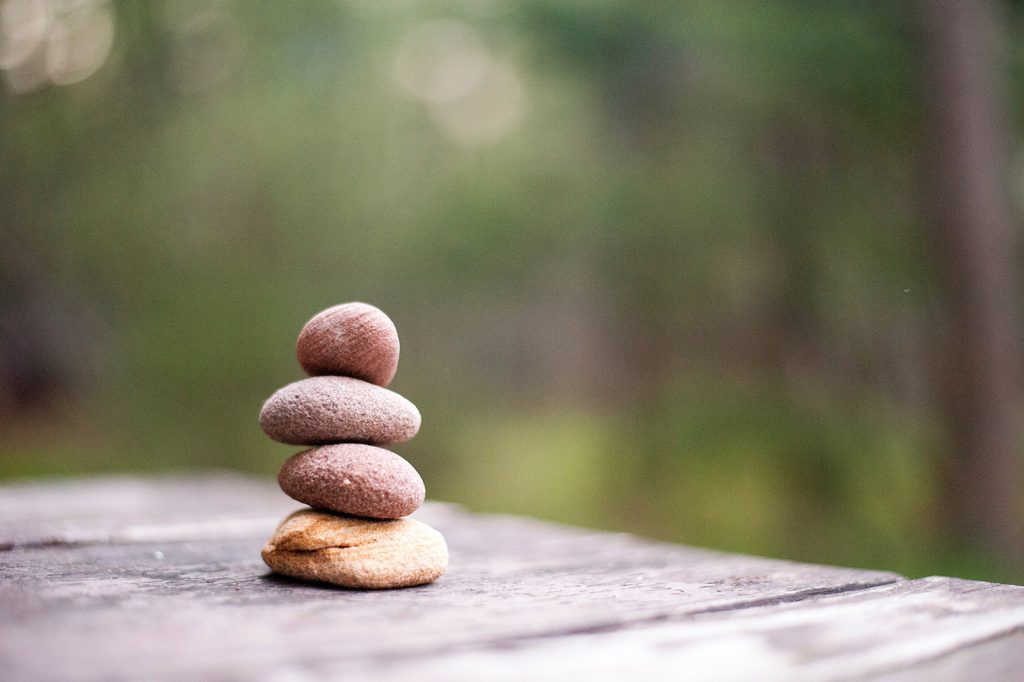
Defining the Essence
To embark on our journey into mindfulness and meditation, we first need to understand the essence of these practices. Mindfulness is the art of being fully present in the moment, embracing your thoughts, emotions, and sensations without judgment. It’s like observing the world around you with a curious, open heart.
Meditation, on the other hand, is the intentional act of focusing your mind to achieve mental clarity, emotional calm, and heightened awareness. It’s a purposeful dive into your inner world, where you explore the depths of your consciousness.
Diving into History
Now, let’s take a step back in time. Mindfulness has its roots in ancient Buddhist traditions, where it was called “sati.” It was a way to gain insight into the true nature of reality and the self. Meditation, too, finds its origins in these ancient practices, with records dating back thousands of years. It was initially a spiritual and philosophical endeavor aimed at enlightenment.
The Science of Serenity
Fast forward to today, and science has provided profound insights into how mindfulness and meditation affect our brains and overall well-being. Studies have shown that these practices can literally reshape our brain structure. They bolster the prefrontal cortex, the area responsible for decision-making and emotional regulation, while quieting the amygdala, the hub of our stress response.
But it’s not just about the brain. Mindfulness and meditation have been linked to reduced stress, improved focus, better emotional regulation, and even enhanced creativity. They can be your key to a calmer, more fulfilling life. In the upcoming sections, we’ll dive even deeper into these benefits and explore how to make mindfulness and meditation an integral part of your daily routine.
The Benefits of Mindfulness and Meditation
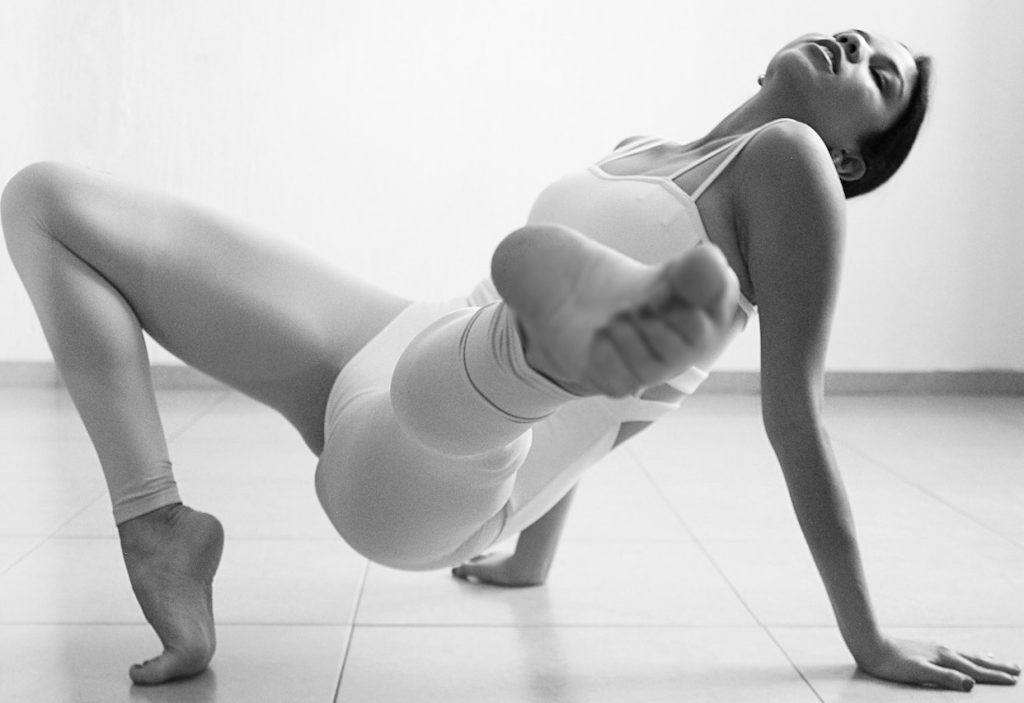
Transforming Lives, Inside and Out
Mindfulness and meditation aren’t just abstract concepts; they’re powerful tools that can transform your life in remarkable ways. Let’s delve into the profound benefits they offer:
1. Physical Well-being
The impact on your body is tangible. Blood pressure tends to lower, and the immune system gets a boost. Stress hormones like cortisol decrease, leading to reduced inflammation. Even your heart may thank you, as meditation can promote cardiovascular health.
2. Mental Clarity
In the chaos of the modern world, mental clarity is a precious gem. Mindfulness and meditation can sharpen your focus, enhance memory, and improve cognitive functions. As your mind becomes less cluttered with the noise of worries and distractions, creativity flourishes.
3. Emotional Resilience
Our emotions often dictate the quality of our lives. These practices provide a sanctuary for your emotions. They foster self-awareness and emotional regulation, allowing you to respond to life’s challenges with greater resilience. In the face of adversity, you’ll find a calm center to weather the storms.
4. Stories of Transformation
To illustrate the life-altering potential of mindfulness and meditation, let’s explore some personal anecdotes. Meet Sarah, a busy executive who felt constantly overwhelmed. Through mindfulness, she discovered the power of pausing amidst her chaos. These moments of mindfulness gradually allowed her to regain control of her life, easing her stress and anxiety.
Then there’s David, a combat veteran struggling with PTSD. Meditation became his lifeline, helping him navigate the depths of his trauma. Over time, he found peace within himself that he thought was lost forever.
5. Science as the Witness
These stories are not isolated incidents. They are echoed by scientific research. Studies have shown that mindfulness and meditation reduce symptoms of anxiety and depression. They can improve sleep quality and boost overall well-being. Brain imaging reveals how these practices increase the gray matter in areas related to self-awareness and compassion.
As you read on, you’ll discover how you, too, can tap into these benefits. Whether you seek physical health, mental clarity, emotional resilience, or all of the above, mindfulness and meditation offer the path to a brighter, more balanced life.
How to Start Meditating
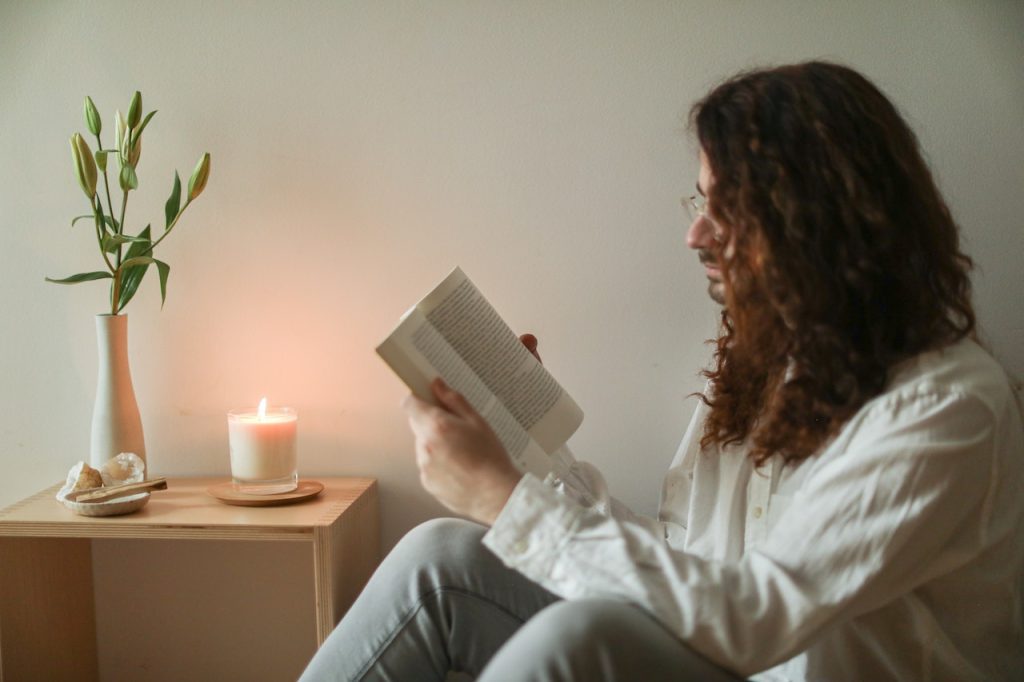
Embarking on Your Meditation Journey
Now that you’re aware of the incredible benefits, it’s time to begin your meditation journey. Don’t worry; you don’t need to be a seasoned yogi or spend hours in silence. Meditation is accessible to everyone, and you can start right now.
1. Creating Your Space
Begin by setting up your meditation environment. Find a quiet, comfortable spot where you won’t be disturbed. This could be a cozy corner of your living room, a cushion in a spare room, or even a peaceful nook in your garden.
2. Posture and Comfort
Your posture matters. Sit or lie down in a way that feels comfortable for you. If sitting, keep your back straight but not rigid. You can sit in a chair, cross-legged on the floor, or on a cushion – whatever suits you. Rest your hands gently on your lap or knees.
3. The Art of Breathing
Focus on your breath; it’s your anchor in meditation. Take a few deep, cleansing breaths to start. Then, let your breath flow naturally. Pay attention to the rise and fall of your chest or the sensation of air passing through your nostrils.
4. Meditation Techniques
There are various meditation techniques to explore:
Mindfulness Meditation: This is one of the simplest forms of meditation. It involves paying attention to your breath or bodily sensations, and when your mind wanders (which it will), gently bring it back to your point of focus.
Loving-Kindness Meditation: Also known as Metta meditation, this practice involves generating feelings of compassion and love towards yourself and others. You repeat positive affirmations and gradually extend these feelings to wider circles, including loved ones and even those you may have conflicts with.
Body Scan: In this practice, you systematically focus your attention on different parts of your body, releasing tension and promoting relaxation.
5. Guidance Along the Way
If you’re unsure where to begin, many resources can guide you. Consider these:
Apps: Apps like Headspace, Calm, and Insight Timer offer guided meditations for various purposes and skill levels.
Websites: Websites like Mindful.org and UCLA’s Mindful Awareness Research Center provide free resources and guided meditations.
Books: Explore books by authors like Jon Kabat-Zinn, Thich Nhat Hanh, or Sharon Salzberg, who offer profound insights into meditation.
Remember, meditation is a practice. Be patient with yourself, and don’t expect immediate results. Start with just a few minutes a day and gradually increase the duration as you become more comfortable. The key is consistency. Over time, you’ll notice the positive changes in your life as you cultivate inner peace and clarity through meditation.
Incorporating Mindfulness into Daily Life
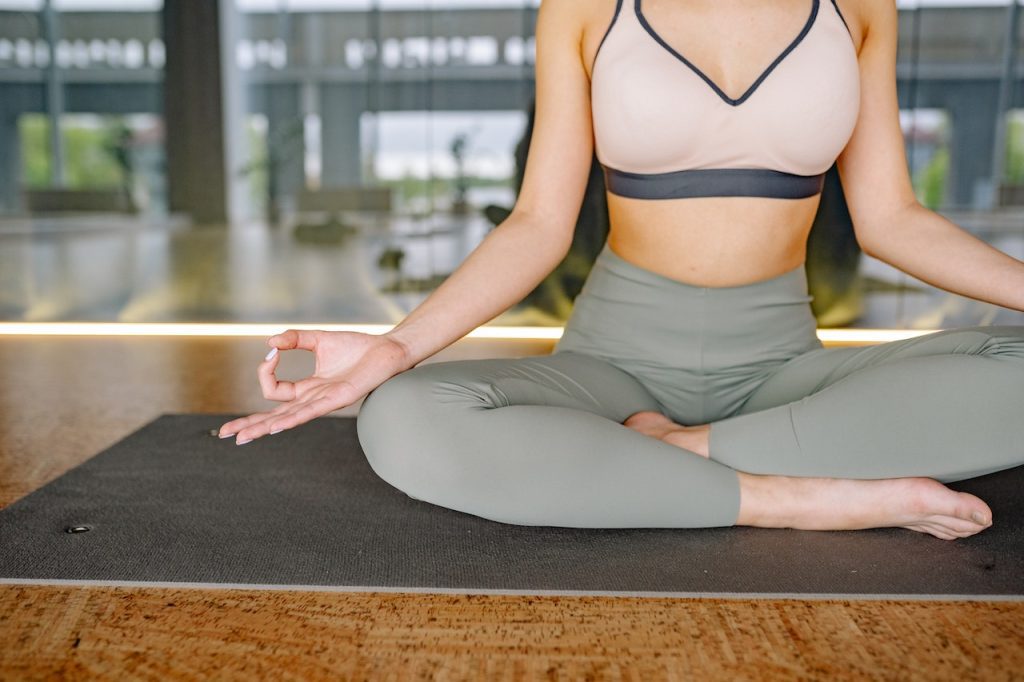
Beyond the Cushion: Embracing Mindfulness Daily
The beauty of mindfulness is that it extends far beyond your dedicated meditation time; it can infuse every moment of your day. Here’s how you can weave mindfulness into your daily life, enhancing your presence and inner peace.
1. Mindful Eating
Eating is often a rushed activity in our fast-paced world. Instead, savor your meals. Pay attention to the colors, textures, and flavors of your food. Chew slowly and mindfully, fully experiencing each bite. Put away your devices and savor this time as a break from the hustle and bustle.
2. Mindful Walking
Walking can become a meditation in motion. Whether you’re strolling in a park or simply moving around your home, feel the sensation of each step. Notice the ground beneath your feet, the rhythm of your breath, and the world around you. Walking mindfully not only reduces stress but also connects you to the present moment.
3. Mindful Working
In the midst of a busy workday, it’s easy to feel overwhelmed. Mindful working involves focusing your attention on one task at a time. When you’re working on a project, immerse yourself fully. If your mind starts to wander to other tasks or concerns, gently bring it back to what you’re doing. You’ll find that this enhances your productivity and reduces stress.
4. Stress Management
Mindfulness is a powerful stress management tool. When faced with stressful situations, take a moment to breathe deeply. Feel the sensation of your breath calming your nervous system. Additionally, use mindfulness to cultivate self-awareness. Understand your stress triggers and responses, allowing you to address them more effectively.
5. Increasing Focus
Our modern world bombards us with distractions. Mindfulness is a remedy. By training your mind to stay present, you’ll naturally increase your ability to focus. When you’re with someone, give them your full attention. When you’re engaged in a task, immerse yourself completely. This not only boosts your effectiveness but also deepens your connections with others.
6. Mindful Breathing Throughout the Day
Remember, your breath is always with you. Whenever you feel rushed, stressed, or disconnected, take a moment to breathe mindfully. Close your eyes if you can, or simply focus your attention inward. Take a few deep breaths, feeling the calming effect it has on your mind and body.
Incorporating mindfulness into your daily life doesn’t require a significant time commitment. It’s about bringing awareness to your everyday experiences, no matter how mundane they may seem. As you practice mindfulness in these simple ways, you’ll discover that you’re living with greater clarity, calmness, and a profound sense of presence.
Overcoming Common Challenges

Mindfulness and meditation can be transformative practices, but like any journey, they come with their share of challenges. Here, we’ll explore some common roadblocks and effective strategies to keep you on track.
1. Restless Mind
Challenge: Your mind seems to be in overdrive, making it hard to sit quietly and focus.
Solution: Understand that a busy mind is normal, especially when you begin. Instead of fighting your thoughts, acknowledge them. Imagine them as leaves floating by on a river. Return your attention to your breath or chosen point of focus gently.
2. Lack of Time
Challenge: Finding time in your packed schedule for meditation can be tough.
Solution: Start small. Even a few minutes of daily meditation can have benefits. You can meditate during breaks, while commuting, or before bed. Consistency matters more than duration.
3. Impatience
Challenge: You’re eager for instant results and get discouraged when you don’t see them.
Solution: Understand that the benefits of mindfulness and meditation often unfold gradually. Think of it as tending to a garden. With patience and consistent effort, you’ll eventually see the blossoms. Keep a journal to track your progress; this can be highly motivating.
4. Falling Asleep
Challenge: You frequently doze off during meditation.
Solution: Experiment with different postures. If you’re lying down, try sitting up. Ensure you’re well-rested when you meditate. A little light stretching before your session can also help combat sleepiness.
5. Resistance
Challenge: Some days, you just don’t feel like meditating or being mindful.
Solution: Cultivate discipline gently. Remind yourself of the positive impact these practices have on your life. Even on days when you resist, commit to just a few minutes. Often, once you start, you’ll naturally want to continue.
6. Expectations
Challenge: You anticipate a particular experience during meditation and become frustrated when it doesn’t happen.
Solution: Let go of expectations. Meditation is about being present, not achieving a specific state. Embrace whatever arises during your practice, whether it’s calmness, restlessness, or something in between.
7. Self-Judgment
Challenge: You’re hard on yourself when you miss a day or when your mind wanders.
Solution: Be kind to yourself. Mindfulness and meditation are about self-compassion. Treat yourself as you would a close friend. Remember, there’s no such thing as a perfect meditator.
8. Finding Guidance
Challenge: You’re unsure if you’re meditating correctly or need guidance.
Solution: Seek resources like meditation apps, online courses, or local meditation groups. Guided meditations can be a great starting point. They provide structure and instruction, easing the learning curve.
Remember, facing challenges on your mindfulness and meditation journey is part of the process. It’s a sign that you’re growing and evolving. Be patient with yourself, stay committed, and embrace the path with an open heart. Overcoming these challenges is a testament to your inner strength and determination.
Personal Stories and Testimonials

Real-life stories often resonate more deeply than theories and facts. Here, we’ll dive into personal anecdotes and testimonials that highlight the genuine impact of mindfulness and meditation.
1. Finding Serenity Amidst Chaos
Testimonial: Meet Sarah, a busy working mom of two. She felt overwhelmed by the constant demands of her job and family. “I was always racing against the clock, stressed, and feeling like I was failing at everything,” she shares.
Transformation: Sarah started a daily mindfulness practice. It began with just five minutes of deep breathing in her car before heading into work. Over time, she noticed a shift. “I became more patient with my kids, and work didn’t feel as suffocating. I could step back, breathe, and respond rather than react,” she says. Mindfulness provided her with a pause button in life’s frenetic pace.
2. From Anxious to Empowered
Testimonial: Alex struggled with anxiety for years. Panic attacks and constant worrying disrupted his life. “I felt imprisoned by my thoughts,” he admits.
Transformation: Alex turned to meditation as a last resort. Initially, he found it challenging to sit with his anxious mind. But gradually, he noticed that the anxiety attacks became less frequent. “I started observing my thoughts rather than being consumed by them,” he says. “Meditation gave me the tools to distance myself from my anxiety and regain control of my life.”
3. A Journey Inward
Personal Story: The author, John, shares his own journey. “I used to be the textbook definition of a workaholic. My mind was always in ‘go’ mode. It wasn’t until I hit a breaking point that I turned to meditation.”
Transformation: “Meditation opened a door to a world I had neglected – my inner world. As I delved deeper into my practice, I uncovered layers of myself I hadn’t explored in years. I found peace, clarity, and a sense of purpose that had eluded me in my frantic pursuit of success.”
4. Weathering Life’s Storms
Testimonial: Maria faced a series of devastating life events, from the loss of a loved one to financial turmoil. “I felt like I was drowning in sorrow and stress,” she recalls.
Transformation: Meditation became her lifeline. It didn’t erase her pain, but it allowed her to navigate it with grace. “Meditation taught me to sit with my grief and fear, to embrace them rather than resist. In that acceptance, I found resilience.”
These stories and testimonials illuminate the diverse ways mindfulness and meditation can profoundly affect lives. They showcase that it’s not about erasing life’s challenges but about equipping oneself with the inner strength to face them. From finding serenity amidst chaos to turning anxiety into empowerment, these personal journeys emphasize that cultivating inner peace and clarity is a path open to all.
Mindfulness and Meditation Resources
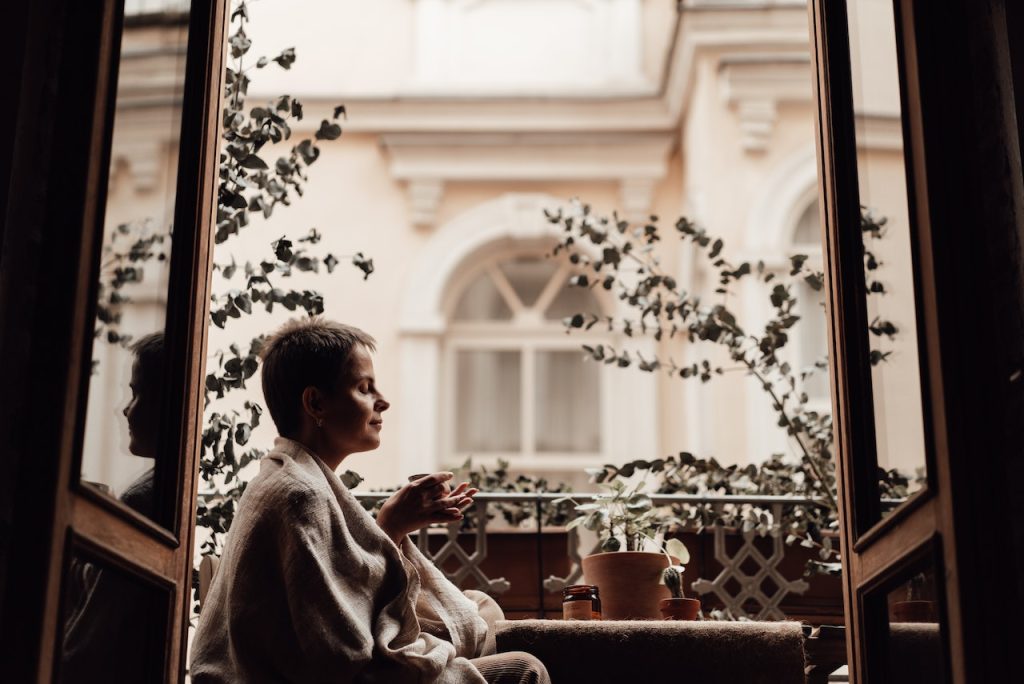
Exploring mindfulness and meditation is a lifelong journey. Here, we’ve curated a list of resources to help you delve deeper into these transformative practices.
Books:
- The Miracle of Mindfulness by Thich Nhat Hanh – A timeless classic introducing mindfulness in everyday life. (Link)
- Wherever You Go, There You Are by Jon Kabat-Zinn – A gentle guide to mindfulness meditation.
- Radical Acceptance by Tara Brach – Explores self-compassion through mindfulness.
- The Headspace Guide to Meditation and Mindfulness by Andy Puddicombe – A practical book for modern mindfulness.
- 10% Happier by Dan Harris – A skeptical news anchor’s journey into meditation.
Podcasts:
- The Mindful Minute – Short, daily meditations for busy lives.
- On Being with Krista Tippett – Explores mindfulness and spirituality through insightful interviews.
- The Meditation Podcast – Guided meditations for various purposes.
- The Daily Meditation Podcast – Daily meditations covering a wide range of topics.
- The Secular Buddhism Podcast – A secular perspective on Buddhist principles, including mindfulness.
Apps:
- Headspace – Offers guided meditation sessions for various needs.
- Calm – Provides meditation, sleep stories, and relaxation techniques.
- Insight Timer – A vast library of free meditations and a supportive community.
- Waking Up with Sam Harris – Mindfulness and meditation sessions led by neuroscientist Sam Harris.
- Breathe – Simple guided breathing exercises to reduce stress and increase mindfulness.
Online Courses:
- Mindfulness-Based Stress Reduction (MBSR) – An evidence-based program developed by Jon Kabat-Zinn, offered by various institutions.
- Coursera – Offers courses on mindfulness and meditation from universities worldwide.
- Udemy – Provides a range of meditation and mindfulness courses for all levels.
- The Chopra Center – Offers online courses on meditation, Ayurveda, and mindfulness.
- Mindful Schools – Provides courses and resources for teaching mindfulness to children and teens.
Websites:
- Mindful.org – A treasure trove of articles, meditations, and resources on mindfulness.
- Mindfulness in Schools Project – Focuses on bringing mindfulness to education.
- Greater Good Magazine – Explores the science of a meaningful life, including mindfulness.
- Lions Roar – Offers a contemporary take on Buddhism, meditation, and mindfulness.
- Tara Brach’s Website – Features guided meditations and talks on mindfulness and compassion.
These resources offer a wealth of knowledge and guidance, whether you’re a beginner or a seasoned practitioner. Remember, the key to mindfulness and meditation is practice and patience. Explore, learn, and discover what resonates with you on your journey towards inner peace and clarity.
Your Most Asked Questions About Mindfulness
Embarking on a mindfulness and meditation journey often comes with questions. Here, we address some of the most common queries to guide you on your path.
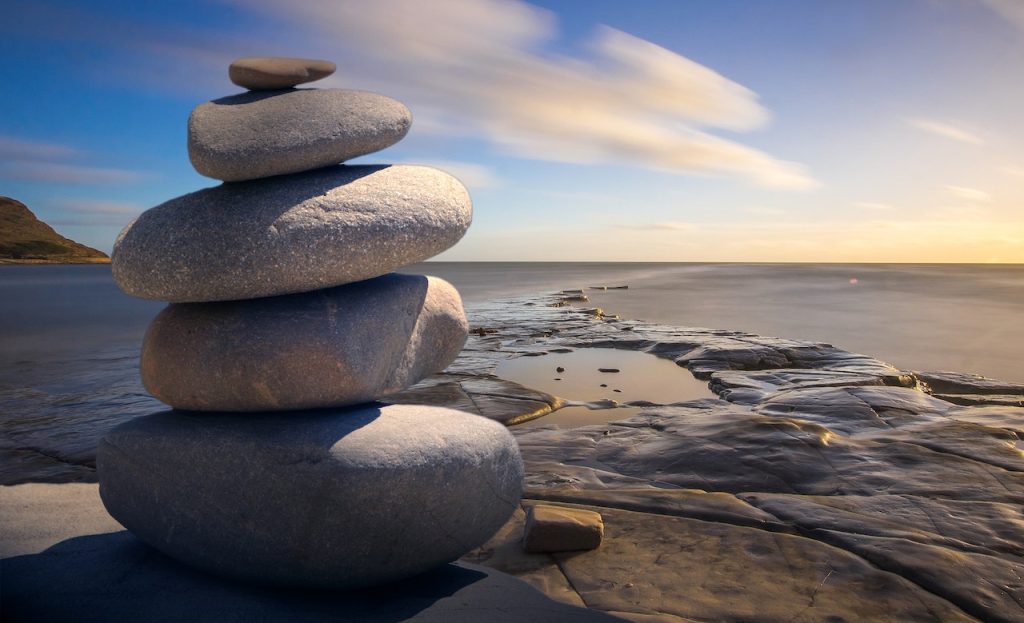
What’s the difference between mindfulness and meditation?
Mindfulness is a mental state achieved by focusing one’s awareness on the present moment. Meditation is a practice that cultivates mindfulness and can take various forms, including mindfulness meditation. While mindfulness is a state of being, meditation is a tool to develop mindfulness.
Do I need to sit in the lotus position to meditate?
No, you don’t. The lotus position is just one way to sit. What’s most important is finding a comfortable posture that allows you to be alert and relaxed. You can sit on a chair, cushion, or even lie down if that works for you.
Can mindfulness and meditation help with anxiety and stress?
Absolutely. Mindfulness and meditation are powerful tools for managing anxiety and stress. They teach you to observe your thoughts and feelings without judgment, providing a sense of calm and perspective.
How long should I meditate each day?
Start with a few minutes and gradually increase as you become more comfortable. Many find 10-20 minutes a day beneficial, but even 5 minutes can make a difference.
I can’t clear my mind during meditation. What should I do?
It’s normal for thoughts to arise during meditation. Instead of trying to clear your mind, gently redirect your focus to your chosen point of attention, whether it’s your breath, a mantra, or a sensation.
Is mindfulness associated with any religion?
While mindfulness has roots in Buddhism, it’s a secular practice and can be embraced by people of all faiths or no faith. It’s about cultivating present-moment awareness and doesn’t require religious beliefs.
Can children practice mindfulness and meditation?
Yes, mindfulness is beneficial for children. There are age-appropriate techniques and programs designed to help children develop emotional regulation and focus.
What if I don’t have time for formal meditation sessions?
Mindfulness can be woven into daily life. You can practice it while walking, eating, or doing routine tasks. Even a minute of focused breathing can be mindful.
I’ve heard of loving-kindness meditation. What is it, and how do I start?
Loving-kindness meditation, also known as Metta, is a practice of generating feelings of compassion and love for oneself and others. To start, find a quiet space, close your eyes, and silently repeat phrases like “May I/you be happy. May I/you be healthy,” directing these wishes first to yourself, then to loved ones, and gradually to all beings.
Can mindfulness and meditation replace therapy or medical treatment?
They can be complementary but not always a replacement. Consult a healthcare professional for serious mental health issues. However, mindfulness and meditation can enhance overall well-being and support other treatments.
These answers provide insights into common queries, but remember that your mindfulness and meditation journey is personal. Feel free to explore, ask more questions, and adapt your practice to what suits you best.
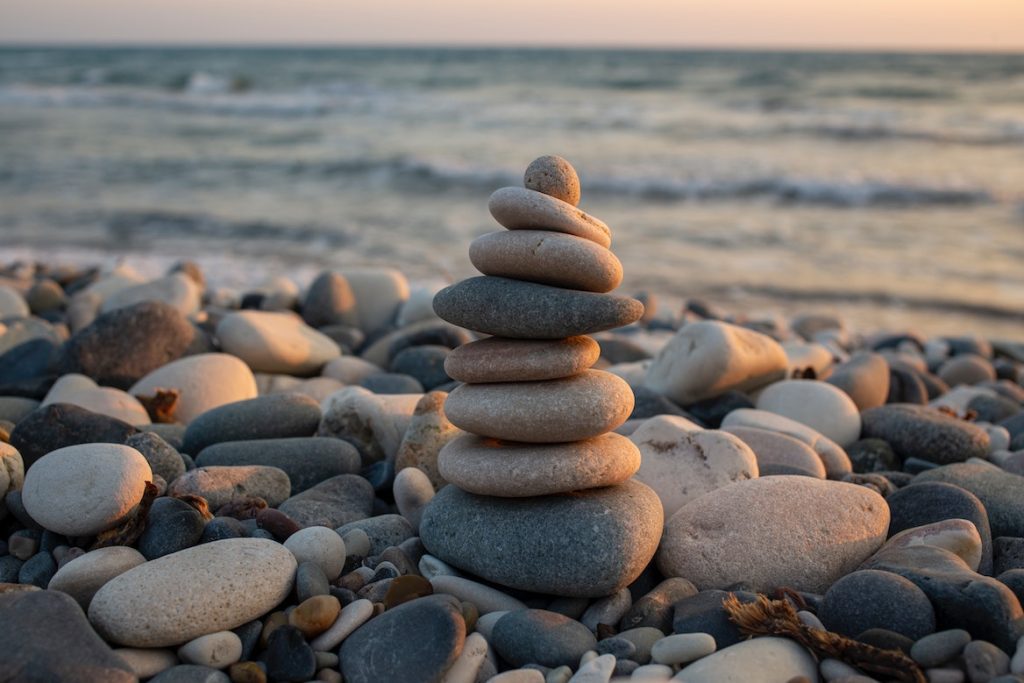
Conclusion & Key Takeaways:
In the hustle and bustle of our modern world, finding a sense of inner peace and clarity can feel like an elusive dream. However, through the practices of mindfulness and meditation, this dream becomes attainable, offering a sanctuary of serenity amidst the chaos. As we conclude this exploration of these transformative practices, let’s revisit the essential insights and invite you to embark on your journey towards a more mindful and meditative life.
- Mindfulness vs. Meditation: Mindfulness is the state of being present, while meditation is the tool to cultivate it.
- Profound Roots: These practices have ancient origins, with mindfulness tracing back to Buddhism and meditation finding its place in various cultures worldwide.
- Scientific Validation: Modern science affirms the profound impact of mindfulness and meditation on our brains and overall well-being, from reducing stress to enhancing focus and emotional well-being.
- Benefits Galore: These practices offer a multitude of benefits – physical, mental, and emotional. They empower individuals to navigate life’s challenges with grace and resilience.
- Starting Your Journey: Beginning your meditation journey is simpler than you think. Find a comfortable posture, focus on your breath or a chosen point of attention, and gradually extend your practice over time.
- Beyond Formal Practice: Mindfulness can be integrated into daily life. Embrace it during everyday activities, from savoring each bite of a meal to taking mindful walks.
- Common Challenges: Understand that challenges like a busy mind are natural. Gently redirect your focus, and remember that progress is a journey, not a destination.
- Universal Practice: Mindfulness transcends religion; it’s a universal practice for anyone seeking inner peace and clarity.
- For All Ages: Mindfulness can be practiced by individuals of all ages, including children. It’s a tool for nurturing emotional intelligence.
- Supplement, Don’t Replace: While these practices can enhance mental well-being, they should not replace professional therapy or medical treatment for severe mental health issues.
In Our Fast-Paced World, Mindfulness and Meditation Are More Than Luxuries; They Are Necessities.
As our lives become increasingly demanding, cultivating inner peace and clarity is no longer a luxury; it’s a necessity. The practices of mindfulness and meditation offer refuge from the storm, a calm harbor within, and a means to thrive amidst life’s challenges. By weaving these practices into our daily routines, we empower ourselves to be the architects of our well-being, forging a path towards a more mindful and fulfilling existence.
Your Journey Begins Now.
The journey towards inner peace and clarity starts with a single step. It begins with a moment of awareness, a pause to breathe, and an intention to be present. As you’ve explored the profound world of mindfulness and meditation within these pages, we encourage you to take that first step. Embrace the practice that resonates with you, whether it’s mindfulness meditation, loving-kindness meditation, or a unique blend of both. And remember, this journey is yours, unique and beautiful, just like you.
May your path be filled with moments of presence, may your mind find stillness, and may your heart discover the peace it seeks. The world may whirl around you, but within, you can always find a sanctuary of serenity.
Begin your journey to inner peace and clarity today.
Your journey to inner peace and clarity has just begun, and we’re thrilled to be a part of it. We invite you to take your next step by actively participating in our community and staying connected for more enriching content.
Share Your Story: We’d love to hear about your experiences with mindfulness and meditation. Have you had a breakthrough moment during meditation? Has mindfulness transformed the way you navigate daily life? Share your stories, insights, and questions in the comments section below. Your experiences can inspire and guide others on their journeys.
Stay In the Loop: Don’t miss out on the latest updates, tips, and inspiration on mindfulness and meditation. Subscribe to our newsletter or follow our blog to receive regular doses of wisdom and encouragement. Our newsletter is your bridge to a more mindful and meditative life, delivered right to your inbox.
Your journey towards inner peace and clarity is a shared path, and together, we can create a supportive, uplifting community. Thank you for being a part of our mindfulness and meditation family. We look forward to connecting with you and witnessing the transformative power of these practices in your life.
With gratitude and mindfulness,
Mr. Pugo
Organize your Entire life, Now!
Organize your ENTIRE Life, works, and family in Notion.
Super life turns Notion into your central home for tasks, habits, workouts, self-care, nutrition, finances, and more.
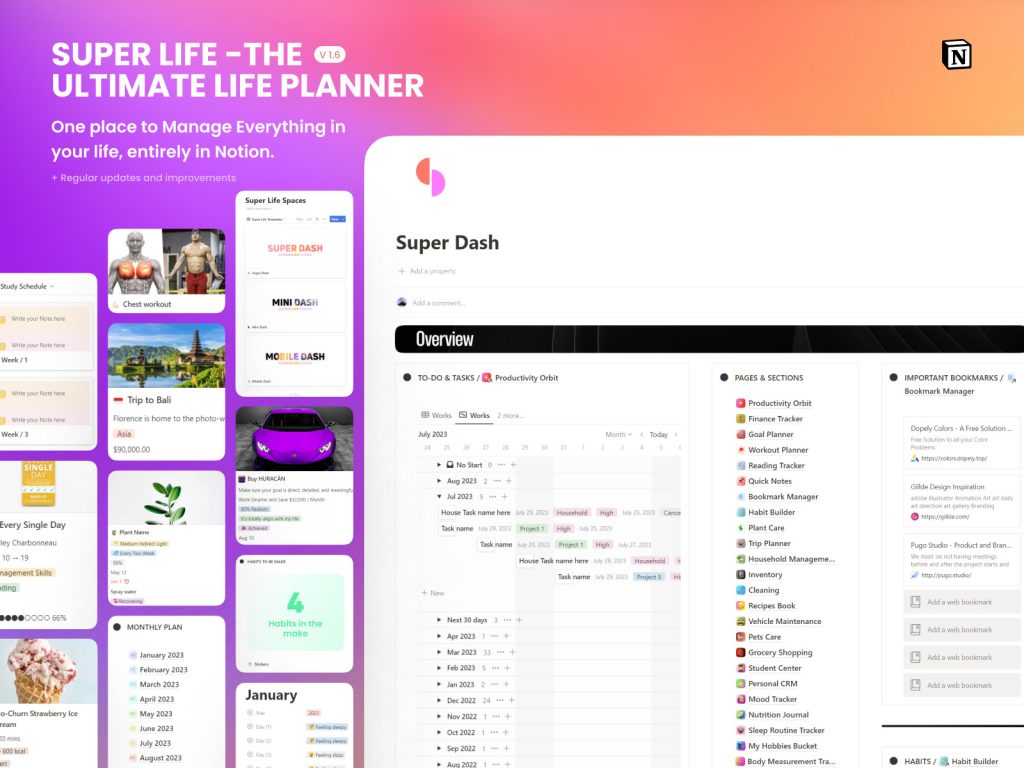
What’s Inside?
- Super Dashboard
- Finance Tracker
- Productivity Orbit
- Goal Planner & Tracker
- Household Management
- Bookmarks Dashboard
- Bookshelf & Reading Tracker
- Workout Planner & Manager
- Plant Care Dashboard
- Trip Planner & Manager
- Notes Dashboard
- Habit Builder & Tracker
- Mood Tracker
- Student Center
- Tips & Guides (NEW)
- And Baking new features regularly


